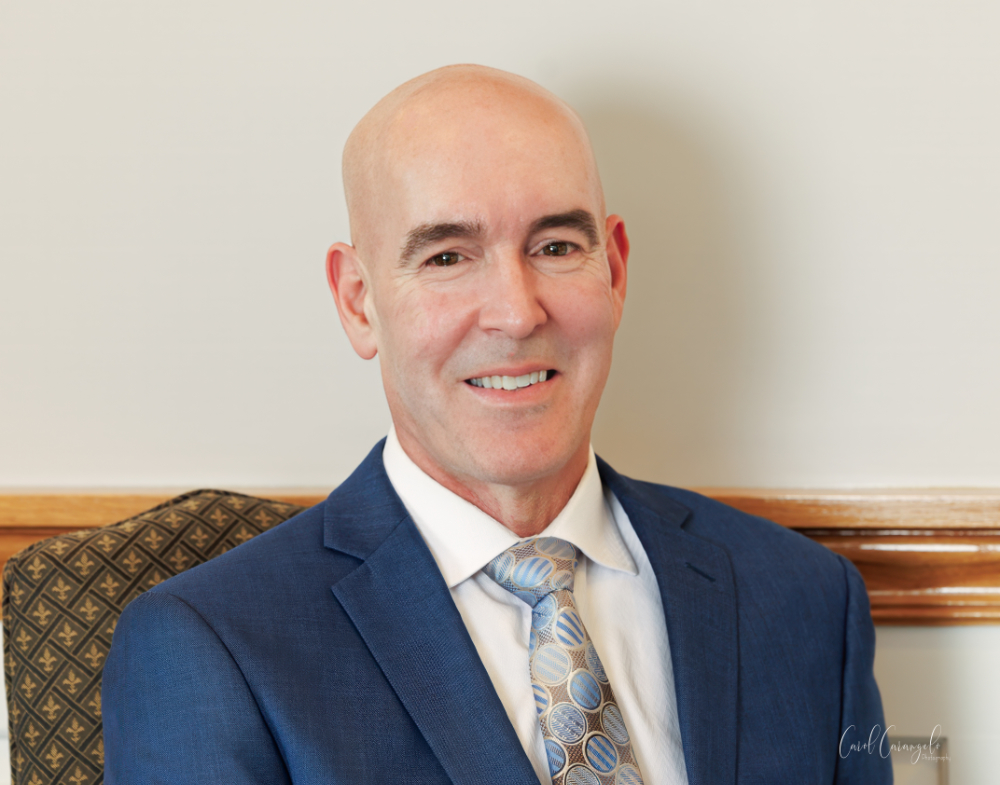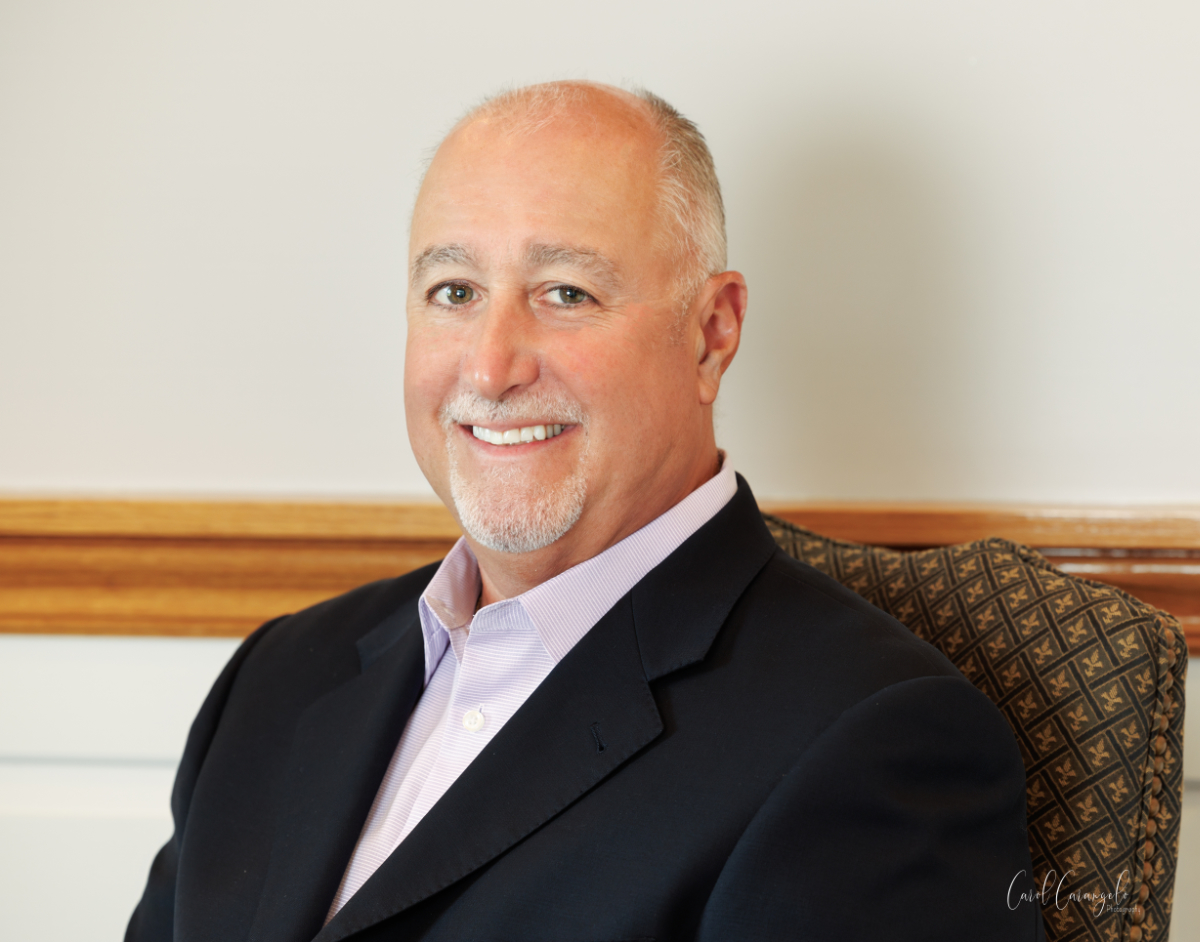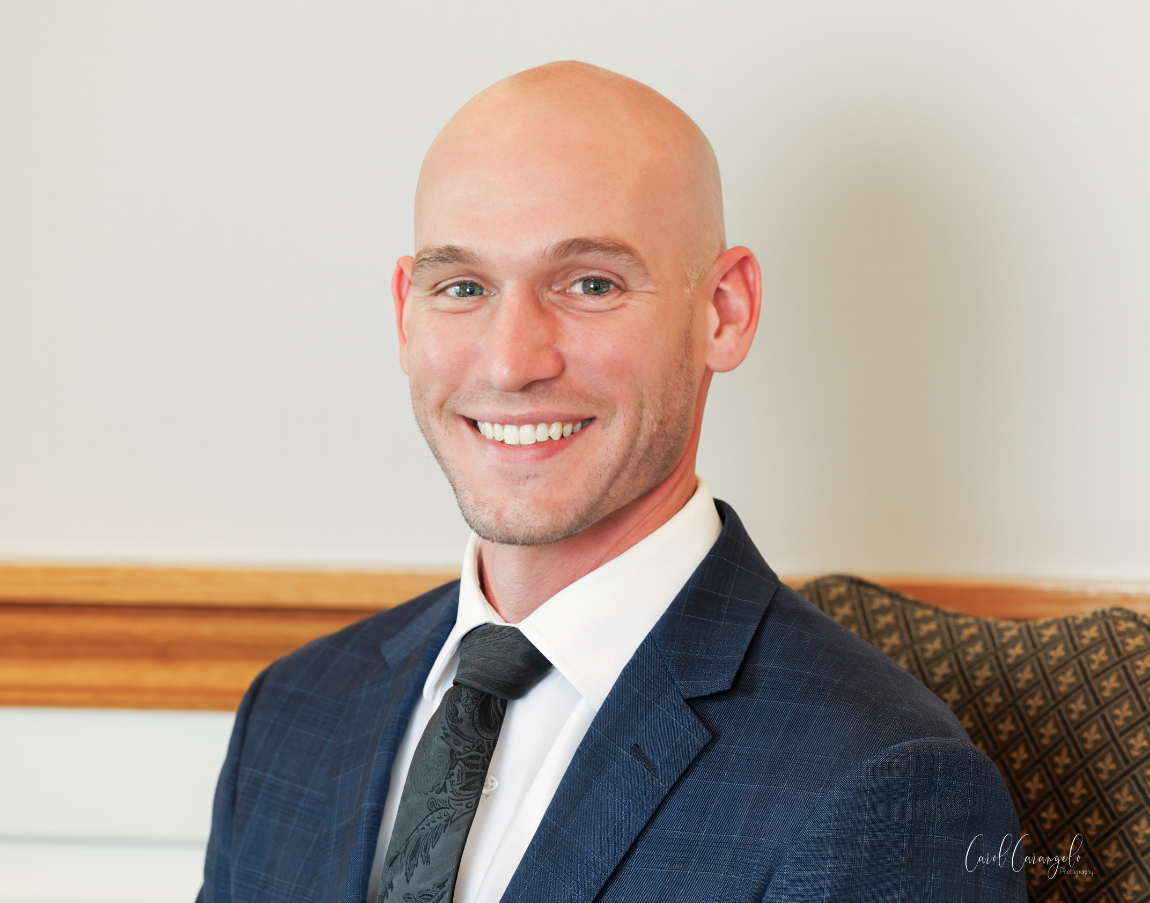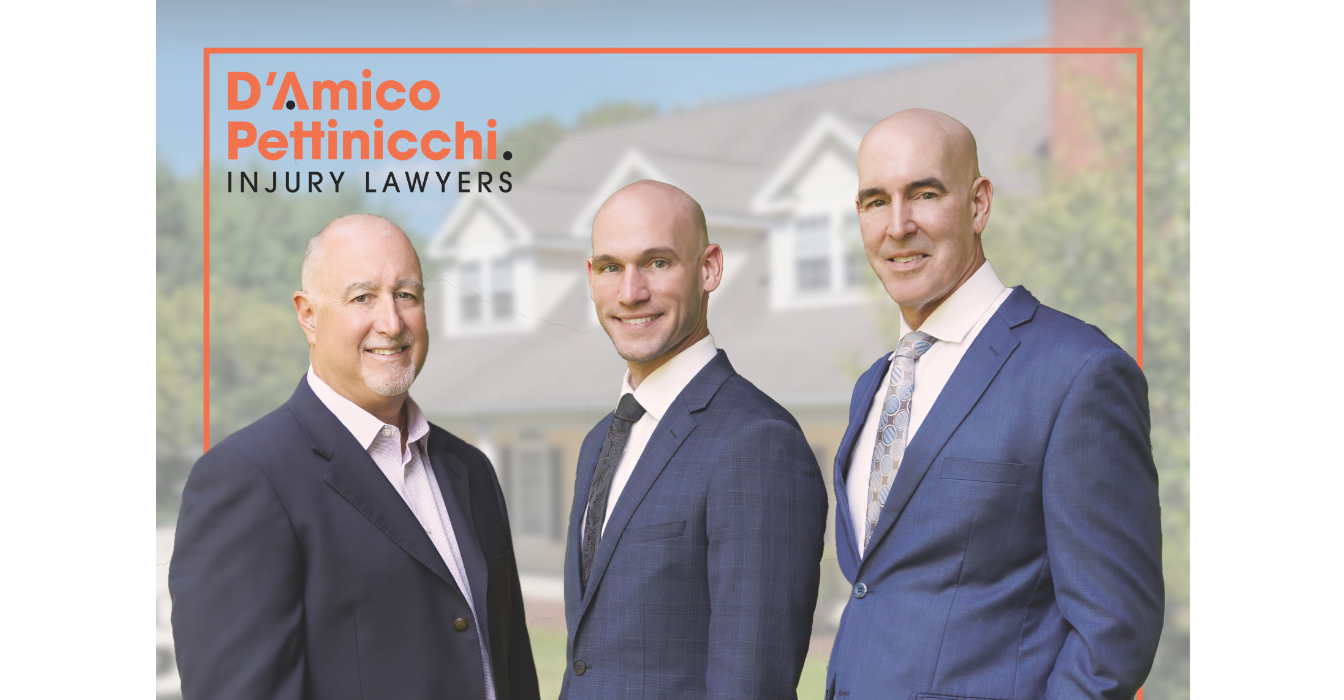Story updated on July 29.
Litigation is a fight – and when it concerns the people we care about most, we want that fight done well. When the professionals tasked with taking care of our parents – the people who took care of us – are negligent in their duties, we want justice. When our children are injured by the hospitals and schools that we entrust with their care, we could go to war. But we want someone who knows how to fight the good fight – who has been through the process time and again, litigating countless cases where clients have faced similar struggles.
That’s why the attorneys at D’Amico Pettinicchi Injury Lawyers are go-to warriors. For the last 35 years, the Connecticut personal injury firm has boldly taken on fights thought impossible, while investing the resources necessary to make those fights a success.
In 1986, Mike D’Amico and Tom Pettinicchi graduated from law school and joined the same firm – a general practice that handled everything from criminal defense to medical malpractice to landlord-tenant disputes. After a few years, they decided to chart their own path and build a more focused practice – one dedicated exclusively to representing plaintiffs and their families. They envisioned a firm that combined top-tier client service with deep expertise, where clients work directly with the partner handling their case and receive exceptional advocacy in a select number of practice areas.
So, in the early days of the firm, the partners sat around a table and decided to specify their preferred practices. D’Amico chose to focus on personal injury and wrongful death litigation, which quickly morphed into an emphasis on the then-nascent field of nursing home litigation. In the years since, he’s secured many of the biggest nursing home verdicts in Connecticut. Known for a careful, methodical approach borne out of a passion for unlocking the mysteries behind the most complex cases, D’Amico is a fierce investigator and a dominant force in the courtroom.
Pettinicchi, meanwhile, chose family law blended with personal injury, with a focus on divorce cases. He continued in family law and personal injury for the next 25 years, where his natural disposition as both a compassionate listener and storyteller dovetailed with hard-hitting trial experience. In 2015, he made the decision to limit his practice exclusively to personal injury law, bringing empathy from his family law work to his injured clients and unifying the firm’s singular mission behind personal injury and wrongful death litigation.

Over the last 35 years, the firm’s mission has remained the same, and its team largely so, as well – with a couple of notable additions. In 2008, the team brought on attorney Christine Norton, whose extensive scientific knowledge and background in medical malpractice defense gives the team an edge in case selection and pre-trial preparation. Then, in 2015, D’Amico’s son, Jeremy D’Amico, joined the firm. In the last decade, he has worked hand-in-hand with the founders, developing a practice characterized by energy, determination, and deep empathy for clients.
The team is dedicated to advocating for society’s most vulnerable: the elderly, children, and individuals with special needs – those too often overlooked or unheard by the system.
Their docket contains high-profile nursing home, wrongful death, and medical malpractice cases, as well as serious motor vehicle accident cases. As lifelong motorcycle riders themselves (with the tattoos to prove it), Mike and Jeremy D’Amico are especially equipped to handle cases involving motorcycle crashes.
That dedication to motorcycles brought a jury verdict on July 22, 2025 of $45M to a 26-year-old Marine reservist and motorcyclist who was permanently paralyzed from the waist down in a 2021 crash. The award is reported to be the largest motorcycle verdict in Connecticut state history and one of the state's top personal injury verdicts of all time.
Pettinicchi has also taken on high-value motor vehicle cases, yielding multi-million-dollar results. These are big resolutions for Connecticut and its more conservative demographic leanings. Over the years, the firm has built a reputation both from clients and fellow lawyers; their substantial war chest, specialized expertise and standard for excellence means they are frequently referred cases statewide.
The firm’s motto – “We fight the good fight” – has been a driving force for each of the attorneys throughout their careers. With a sophisticated practice walked and talked by plain-spoken, down-to-earth lawyers, theirs is a fight imbued with an uncommon depth of empathy and recognition for human dignity. In the pursuit of those battles, they have altered the outlook on personal injury law in Connecticut and beyond.
REVOLUTIONIZING CARE FOR THE ELDERLY…
When D’Amico and Pettinicchi began their work, nursing home cases were often dismissed as having little value. Insurers saw no reason to pay much for injuries or deaths involving people with short life expectancies and serious pre-existing conditions. As a result, even strong claims involving real human loss were routinely ignored. But to these attorneys, that never sat right.
“We made a decision early on that we would never let a person’s age or medical history diminish the value of their life in our eyes – or in the courtroom,” says D’Amico. “Everyone deserves dignity, safety, and proper care. When that trust is violated through negligence, accountability isn’t optional – it’s a moral imperative.”
In one of D’Amico’s earliest cases in the field, he represented the family of a nursing home resident – a man in his mid-nineties who was bedbound, mute, deaf and blind. He was on a severely restricted diet, only able to eat pureed food. On one occasion, however, nursing home staff fed him “regular” food. As he ate, the man asphyxiated and, tragically, died.
At the time, D’Amico remembers, insurance companies would have typically offered $25,000 to $75,000 for that kind of claim. “Most lawyers in Connecticut at the time would've said, ‘We're not going to pursue that claim. It’s just not practical,’” D’Amico says. “Or they would have settled the case cheap because all insurance carriers and most judges and mediators felt the same way – that an ailing, elderly person’s life just wasn’t worth much.”
D’Amico was not one of those lawyers. He took on the case for the man’s family with the full force of his formidable strategic and trial skills, treating the case as seriously as he would any other. Disdaining the standard lowball settlement, he invested the time and resources necessary to litigate the case through to trial.
It was a gamble, and D’Amico knew it. But it worked. Ultimately, the jury returned a verdict of more than $2.5M, with the total value coming in at around $4M with interest.
The legal community took notice. After the verdict, a well-respected local attorney called to congratulate D’Amico and his team for pursuing a case that most firms would have turned down. That moment marked the beginning of a broader shift – D’Amico was helping to spark a new era of advocacy for the elderly in Connecticut.
Referrals began coming in, but keeping the field to himself has never been D’Amico’s style. Instead, he chose to put his knowledge to collective use, educating the Connecticut legal community on the necessity and technicalities of the practice of nursing home litigation through scholarly articles and lectures.
Today, he remains a thought leader in the field of nursing home abuse and neglect, continuing to provide insight and instruction to an area of law unfamiliar to many lawyers – with unique medical records, statutes and regulations. He has served as the President of the Connecticut Trial Lawyers Association and currently serves on the CTLA’s Board of Governors and on its Executive and Medical Malpractice Committees as well as being Co-Chair of the General Tort Committee.
[D'Amico] remains a thought leader in the field of nursing home abuse and neglect, continuing to provide insight and instruction to an area of law unfamiliar to many lawyers.
As pioneers in Connecticut nursing home abuse litigation, the firm continues to devote its full strength to these cases – driven in part by Jeremy D’Amico, whose work reflects a deep belief that no one’s age should diminish their right to strong legal representation.

“In all these cases, families are making one of the most painful decisions of their lives: trusting a facility with the care of someone they love,” he says. “When that trust is broken – when someone they love is harmed or lost – it’s not just medical negligence. It’s betrayal.”
In a case currently pending for trial, Jeremy D’Amico is representing the family of a man who suffered from Alzheimer’s, which had progressed to the point that he could neither speak nor move himself. One day, the man began grimacing in pain and had bruises on his back and shoulder. When he was taken to the hospital, doctors discovered not only a fractured shoulder, but additional fractures in his arm, rib and hip, along with extensive bruising throughout his body. Five days later, the man died of the blunt force injuries to his body.
When the family contacted the D’Amico Pettinicchi team for a more extensive investigation, the lawyers contacted a forensic pathologist and autopsy expert. Based on the fracture and bruising pattern, the pathologist concluded that the man fell. But a key question remained: If he couldn’t move independently, how could the man have fallen? The answer, the attorneys argued, is that while changing his clothes, a nurse dropped the man and didn’t tell anyone – ultimately leading to his death.
“[The insurance company] believed his life didn’t matter because he couldn’t speak or move. But I can tell you, when his family walked into the room, he still smiled,” Jeremy D’Amico says. “That’s presence. That’s connection. That’s humanity. And no one should get away with treating a life like that as disposable. You can’t just drop someone – literally or figuratively – and pretend their life didn’t matter. Not on our watch.”
Unfortunately, many nursing home cases do become wrongful death cases, so the practices go hand in hand, explains Pettinicchi. He remembers a case involving a man with dementia and documented fall risk who was left for hours in an emergency room cubicle without his nurse. Although he kept trying to climb out of bed, no one took any proper measures to protect him. He tried again to climb out of bed, fell to the floor and broke his hip. He never returned home again and shortly thereafter passed away.
“What could’ve been seen as just another injury became something far more serious – and far more tragic. The question we had to answer was: did the fall cause his death, or would he have passed anyway? We proved the truth: that this fall accelerated his decline and took away his quality of life as he knew it to be before the fall,” Pettinicchi says.
…AND FOR THE YOUNG
There is also incalculable loss when lives are damaged when they’ve barely been lived. Jeremy D’Amico is particularly dedicated to taking on cases on behalf of catastrophically injured children, including young people with special needs, such as autism. The complexities of a child’s injury are often greater than an adult’s: The lawyers must project what effect the injury will have on a child’s mental and physical development, and how that interruption to development will affect their adulthood. It’s a complex puzzle of medicine and psychology requiring rigorous investigation.
In one case, Jeremy D’Amico partnered with his father to represent a boy with autism. This young boy (let’s call him “Anthony”) was riding the bus home from school when the bus drove off the road and crashed into a tree. Anthony suffered multiple skull fractures and internal bleeding, causing near-fatal pressure in his brain. While he survived, his personality changed dramatically following the crash: Anthony became physically aggressive, unmotivated, and unpredictable, and no longer recognized his family in the same way he had before.
Four years after the crash, an MRI confirmed that Anthony’s brain contained dead brain tissue in the temporal and frontal lobes, as well as evidence of a severe brain injury. But when D’Amico Pettinicchi sued the bus company and the motorist involved in the crash, the defense and their neurology experts testified that Anthony’s behavior was consistent with his behavior before the crash, and any changes were due to his autism combined with the onset of puberty.
The D’Amicos’ investigative skills came into play in combating that argument. “A lot of people think that trial lawyers are all about trying the case in the courtroom when, in fact, 95 percent of the most critical work is done before you ever step foot in court,” Mike D’Amico says.
In this case, Jeremy D’Amico explains, the most difficult challenge was understanding what was going on inside of this young boy’s head when he couldn’t explain himself. The first part of that investigation was conducted by D’Amico himself, who spent multiple weekends with Anthony and his family at their house, going through photo albums and watching old home videos to understand his pre-accident life.
“When you’re representing children who can’t speak for themselves – especially one with special needs – the stakes are higher, and the responsibility is greater. It’s not just about telling their story; it’s about uncovering it. And that begins with listening – not just hearing but truly understanding on the deepest level.”
In building the case, D’Amico brought in one of the nation’s leading autism experts and spoke with behavioral therapists at Anthony’s school, whom he describes as “instrumental” in understanding the child’s experience. They helped paint a clear picture of Anthony’s behavior before and after the accident – even down to the artwork he created in class. One moment stood out: A therapist shared a photo of a whiteboard drawing Anthony had made. He had sketched a stick figure in black marker, scrawled “broken eyes” across it, then colored over the face in red ink.
While Anthony couldn’t speak about the accident to his lawyers, because of the investigation, his lawyers were nonetheless able to hear him. That depth of preparation helped the D’Amicos prepare a powerful story – one the jury responded to.
“Anthony couldn’t tell us in words what happened, but that picture told us everything. And we made sure the jury heard it loud and clear.”
In November 2019, the jury returned a $23M verdict, one of the largest in Connecticut history, enabling Anthony to get the care he needs for the rest of his life.
THE WAR CHEST: MEDICAL MALPRACTICE, WRONGFUL DEATH AND BEYOND
Medical malpractice is another area that demands intensive expert analysis. One of the firm’s key strengths is its deep resources – and its unwavering commitment to using them. “We identify what’s needed, and we spend what it takes. Period. No exceptions,” says Jeremy D’Amico.
You can’t just drop someone – literally or figuratively – and pretend their life didn’t matter. Not on our watch.
“Part of the job of being a lawyer is knowing where to go for resources,” adds Pettinicchi. First and foremost, there’s the in-house expertise. That comes back to Christine Norton, who has been spearheading the team’s pre-litigation medical malpractice research and case evaluations for nearly two decades. In her evaluations, she combines extensive medical knowledge with an understanding of how medicine interplays with the law.

Over the years she has handled cases involving a wide range of medical fields, including radiology, anesthesiology, obstetrics and gynecology, plastic surgery, pediatrics, dentistry, emergency room medicine, oncology and more. She decides which good fights can be fought, determining whether a medical malpractice claim is justified and provable – and guiding medical research from the case’s earliest days.
Currently, Pettinicchi is working on a medical malpractice case involving a botched colonoscopy. His client went in for a routine exam, and during the process her colon was perforated twice. She became septic and fell dangerously ill, and as a result had two significant sections of her large and small colon removed. Two years later, Pettinicchi says, the woman’s health remains compromised.
Additionally, in a unique move, the team has invested in a fully equipped in-house mock courtroom. Mock jurors are brought in, thoroughly voir dired to ensure impartiality, and then they act as jurors for the attorneys, who “present the facts as fairly as you can to them and not only hear what their decision is, but then ask them questions about how they came up with their decision, what they thought was and wasn’t important,” says Pettinicchi. “You’ll learn both what they heard and what they wanted to hear but didn’t.”
Not only is it a space to train, but these sessions create a vital baseline for understanding potential jury response. If the attorneys are unsure how jurors may respond to the defense’s liability, particularly in cases with complex technical jargon that can be difficult to translate, that can be tested in the mock courtroom.
“The mock courtroom isn’t just a training tool – it’s a truth-telling tool. It lets us listen to jurors in real time, learn what they care about, what confuses them, and what resonates. That knowledge shapes how we build our cases – and how we deliver justice,” says Pettinicchi.
Pettinicchi also explains the jurors’ findings are part of a key math equation for determining damages: If a focus group finds a client 20 percent responsible, the attorneys will consider a reduction off the full value of the case and aim for that number when seeking resolution. It’s just to the plaintiff – an innovative solution to what can otherwise be an ambiguous task.
Finally, as in every choice at the firm, it comes back to the client. Personal injury and wrongful death clients have suffered tragedies that can be difficult to talk about, especially in an unfamiliar setting and before the judge, jury, and gallery.
The mock courtroom gives them an environment to practice their testimony before taking the stand, providing an unparalleled chance for both preparation and comfort.
“We want our clients to walk into court already having felt what it’s like to be on the stand. That kind of preparation doesn’t just help their case – it helps their healing. It turns fear into confidence.”
ACCOUNTABILITY AND LOOKING AHEAD
When the attorneys invest in a case, the results often follow – frequently in the form of seven- and eight-figure verdicts and settlements. But while financial recovery matters, the team sees an equally important outcome: accountability. “This work holds negligent people accountable – those who aren’t careful enough with others’ lives,” says Pettinicchi.
“It’s about justice and deterrence,” Jeremy D’Amico agrees. “It’s about holding people accountable, because when you hold them accountable, the behavior changes. When it becomes more expensive for them to make the mistake than it does to not make the mistake, then they’ll stop. That’s how you protect the next person.”
As their caseload has continued to expand, they are currently looking for an additional collaborator. With such a close-knit team, it’s vital to find the right fit. From the top leadership down, Pettinicchi says, “We pride ourselves in trying to make it feel like a small family. Everybody’s doors are always open. We try to provide an atmosphere where people want to come to work and feel comfortable.”
But that new lawyer will require a fit not only with the lawyers, but with the firm mission, and with the drive to help others and prepare to fight the good fight for the most vulnerable among us.
“There’s a level of motivation that comes from wanting to help those who can’t help themselves,” says Jeremy D’Amico. “That purpose – that calling – is what gets you out of bed in the morning and keeps you up late at night. This isn’t work for the faint of heart. It’s for those who care too much to walk away.”


